Surendra S. Shastri
Tata Memorial Centre, India
His main areas of interest are cervical, breast and tobacco attributed cancers and has published in leading Journals including Nature, Lancet, Lancet Oncology, NEJM, JNCI and IJC. He has also contributed to several reviews and guidelines on these cancers published by the World Health Organization and American Society of Clinical Oncology.
He is a recipient of:
World Health Organization, Director General’s Special Award for Outstanding Contributions to Tobacco Control among Youth, in May 2008.
International Achievement Award from the American Cancer Society, for Demonstrating Outstanding Leadership in the Global Fight against Cancer, in July 2006.
Prestigious Humanitarian Award from the American Society of Clinical Oncology (ASCO) in May 2014.
Good Practices for Authorship
Introduction
In any research document the proper listing of authors ensures that the appropriate individuals get credit, and are accountable, for the research/publication. Misrepresenting a researcher’s relationship to the reported work is considered to be a form of research misconduct that destroys the credibility of the publication or even the work itself.
International Committee of Medical Journal Editors (ICMJE) 2017 guidelines suggest that, “All persons designated as authors should qualify for authorship, and all those who qualify should be listed.”
Authorship Criteria
3 basic criteria are applied to qualify for authorship:
- Substantial contribution to the study conception and design, data acquisition, analysis, and interpretation
- Drafting or revising the article for intellectual content
- Approval of the final version
The order of authorship should be “a joint decision of the coauthors”.
Multi-center Trial Authorship
While reporting multi-center trials, all researchers with significant contributions from all centers are listed as authors, with a statement of the specific individual contributions. Sometimes authors are listed alphabetically, with a statement that all authors made equal contributions to the study and the publication.
Acknowledgements
Persons who are involved in a study, but don’t satisfy the authorship criteria, e.g. consultants/advisors, people who are responsible for financial and other logistic support, should appear in the list of acknowledgements.
Unacceptable Authorships
- Ghost authorship: people who contribute substantially but are not acknowledged (often paid by commercial sponsors)
- Guest authorship: people who make no significant contributions, but are listed to help increase the chances of publication
- Gift authorship: people whose contribution is based solely on a tenuous affiliation with a study
Authorship disputes
Misrepresentation of an individual’s actual role in the study/publication can lead to contentious authorship disputes. Common examples of authorship misconduct are:
- Purposely misrepresenting a listed author’s role
- Purposeful misinterpretation of the substantial nature of an author’s involvement in the research/ publication
- Not listing a substantial contributor as an author
Authorship Disputes Resolution
Issues around authorship are usually complicated and contentious. The dispute resolution usually rests with the research institution. Early career researchers fear to speak up, since that might jeopardize their careers.
An aggrieved researcher may file a complaint with the publishing journal and the research institution. The institution then conducts and enquiry and submits the report to the journal. The journal then advises the corresponding author to make the necessary changes, if warranted.

